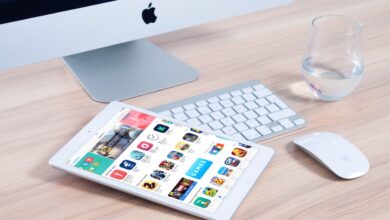The Rise of Microlearning: Is It Replacing Traditional Classes?
Microlearning is transforming education but it replace traditional classes? Explore pros, and future of bite-sized learning vs conventional education.

Microlearning has emerged as a revolutionary force in education, challenging conventional teaching methods with its bite-sized, focused approach to knowledge delivery. In an era where attention spans are shrinking and digital technology dominates, these short learning modules typically 3 to 10 minutes long offer unprecedented flexibility and efficiency. As organizations and educational institutions increasingly adopt the platforms, a critical question arises: is this innovative approach poised to replace traditional classroom learning entirely, or will it serve as a complementary tool in the educational ecosystem?
The debate surrounding the versus traditional education reflects broader shifts in how we acquire and process information. While conventional classrooms provide structured, in-depth learning experiences with face-to-face interaction,the caters to the modern learner’s need for immediate, accessible, and personalized content. This contrast highlights a fundamental tension in education today between the depth of traditional pedagogy and the agility of digital learning solutions. As we examine this educational evolution, we must consider whether It represents the future of knowledge acquisition or simply an effective supplement to established teaching methodologies.
The Rise of Microlearning
The Evolution of Microlearning
It is not an entirely new concept; its roots can be traced back to early pedagogical theories emphasizing spaced repetition and incremental knowledge acquisition. However, the advent of smartphones, e-learning platforms, and artificial intelligence has propelled microlearning into mainstream education. Platforms like Duolingo, Khan Academy, and LinkedIn Learning utilize microlearning techniques to deliver lessons in under ten minutes, catering to busy professionals and students alike. The shift toward of it aligns with modern cognitive research, which suggests that shorter, more frequent study sessions enhance retention.
Advantages of Microlearning
One of the most significant benefits of it is its accessibility. Learners can engage with content anytime, anywhere, using mobile devices. This flexibility is especially valuable for working professionals who struggle to dedicate long hours to continuous education. Additionally, The modules are often designed with multimedia elements videos, quizzes, and gamification which enhance engagement and knowledge retention. Another advantage is personalization. Adaptive learning technologies analyze user performance and tailor content to individual needs, ensuring efficient learning. Unlike traditional classrooms, where one-size-fits-all teaching may leave some students behind, microlearning allows learners to progress at their own pace.
Limitations of Microlearning
Despite its benefits, It is not without drawbacks. It may not be suitable for complex subjects requiring in-depth analysis, such as advanced mathematics or philosophical theories. Traditional classrooms foster critical thinking through discussions, debates, and hands-on experiments elements that its struggles to replicate fully. Additionally, the lack of face-to-face interaction in microlearning can hinder social learning and collaborative problem-solving. Another challenge is maintaining learner discipline. While It offers convenience, it also requires self-motivation. Without structured schedules, some learners may procrastinate or skip modules altogether.
Microlearning vs. Traditional Classes
Rather than viewing microlearning as a replacement for traditional education, a blended approach may be the most effective solution. Microlearning excels in reinforcing concepts, providing just-in-time training, and supporting lifelong learning. Meanwhile, traditional classrooms offer comprehensive instruction, mentorship, and peer interaction. For instance, universities are increasingly integrating microlearning into their curricula through flipped classrooms where students review micro-content at home and engage in discussions during class. Corporations also combine microlearning with workshops to ensure employees retain and apply new skills.
The Future of Education
Augmented Reality (AR) and Virtual Reality (VR)
The integration of Augmented Reality and VR will make learning more immersive. Imagine a 5-minute VR simulation for medical students or AR-guided troubleshooting for engineers. These technologies will bridge the gap between theoretical knowledge and real-world application.
Integration with Artificial Intelligence (AI) and Adaptive Learning
The future of microlearning will be heavily influenced by AI-driven personalization. Adaptive learning algorithms will analyze user behavior, strengths, and weaknesses to deliver customized micro-modules. AI-powered chatbots and virtual tutors will provide instant feedback, making learning more interactive and efficient.
Expansion of Mobile Learning (M-Learning)
With smartphone usage increasing globally, mobile-friendly microlearning will dominate. Short, engaging lessons accessible via apps will cater to on-the-go learners, making education more flexible and inclusive. Expect more gamified microlearning platforms that boost engagement through rewards and progress tracking.
Microlearning in Corporate Training and Upskilling
Businesses are increasingly adopting learning for employee training due to its cost-effectiveness and efficiency. Future workplaces will rely on bite-sized training modules for just-in-time learning, compliance training, and soft skills development, reducing downtime and improving retention.
Micro-Credentials and Digital Badges
Traditional degrees may be supplemented (or even replaced) by micro-credentials short, certified courses that validate specific skills. Platforms like Coursera and LinkedIn Learning already offer microlearning-based certifications, and this trend will grow as employers prioritize skill-based hiring.
Social and Collaborative Microlearning
Future microlearning platforms will incorporate social learning features, such as peer discussions, group challenges, and community-based knowledge sharing. This will address one of microlearning’s key limitations lack of human interaction.
Data-Driven Learning Analytics
Advanced analytics will track learner progress, engagement, and knowledge gaps in real-time. Educators and organizations will use this data to refine microlearning content, ensuring maximum effectiveness.
Hybrid Learning Models
Rather than replacing traditional education,It will complement it. Schools and universities will adopt flipped classrooms, where students learn concepts via micro-modules at home and engage in discussions or hands-on activities in class.
Challenges and Ethical Considerations
Despite its potential,It faces challenges like content oversimplification, digital divide issues, and potential over-reliance on automation. Ensuring accessibility and maintaining educational depth will be crucial.
The Long-Term Impact on Lifelong Learning
It supports lifelong learning by making education more accessible and manageable. As automation changes job markets, continuous upskilling through micro-courses will become the norm.
Read More: EdTech That’s Actually Useful: Tools Students Love
Conclusion
Ithas undoubtedly transformed the educational landscape, offering a flexible and efficient alternative to traditional classroom instruction. Its ability to deliver bite-sized, targeted content aligns perfectly with modern learners’ needs and the fast-paced digital world. However, while It excels in skill-based training, just-in-time learning, and knowledge reinforcement, it cannot fully replicate the depth of understanding, critical thinking development, and interpersonal connections fostered by traditional education. The future likely lies not in replacement, but in integration where It complements conventional methods to create a more robust and adaptable learning ecosystem.
As educational paradigms continue to evolve, It will increasingly serve as a vital component of blended learning approaches rather than a complete substitute for traditional classes. Institutions that successfully combine the strengths of both methods the accessibility and personalization of the with the comprehensive instruction and social interaction of classroom learning will be best positioned to meet diverse learner needs. Ultimately, the most effective education systems will be those that recognize the as a powerful tool in the educational toolkit, while preserving the irreplaceable value of human connection and deep learning experiences offered by traditional education models.
FAQs
What is microlearning?
Itis an educational approach that delivers content in short, focused segments, typically under ten minutes, designed for quick comprehension and retention.
Can microlearning replace traditional classrooms?
While It is highly effective for certain types of training, it is unlikely to fully replace traditional classrooms, which provide in-depth learning and social interaction.
What are the benefits of microlearning?
It offers flexibility, personalization, cost-effectiveness, and higher engagement through multimedia and gamification.
What are the limitations of microlearning?
It may not suit complex subjects, lacks face-to-face interaction, and requires high self-discipline from learners.
How can microlearning and traditional education work together?
A blended approach, such as flipped classrooms, combines microlearning’s convenience with traditional teaching’s depth and interaction for optimal results.










